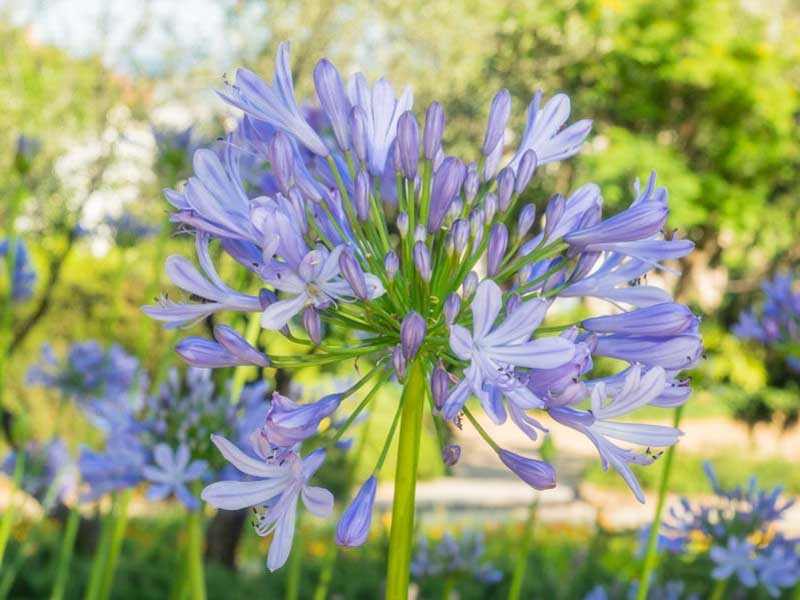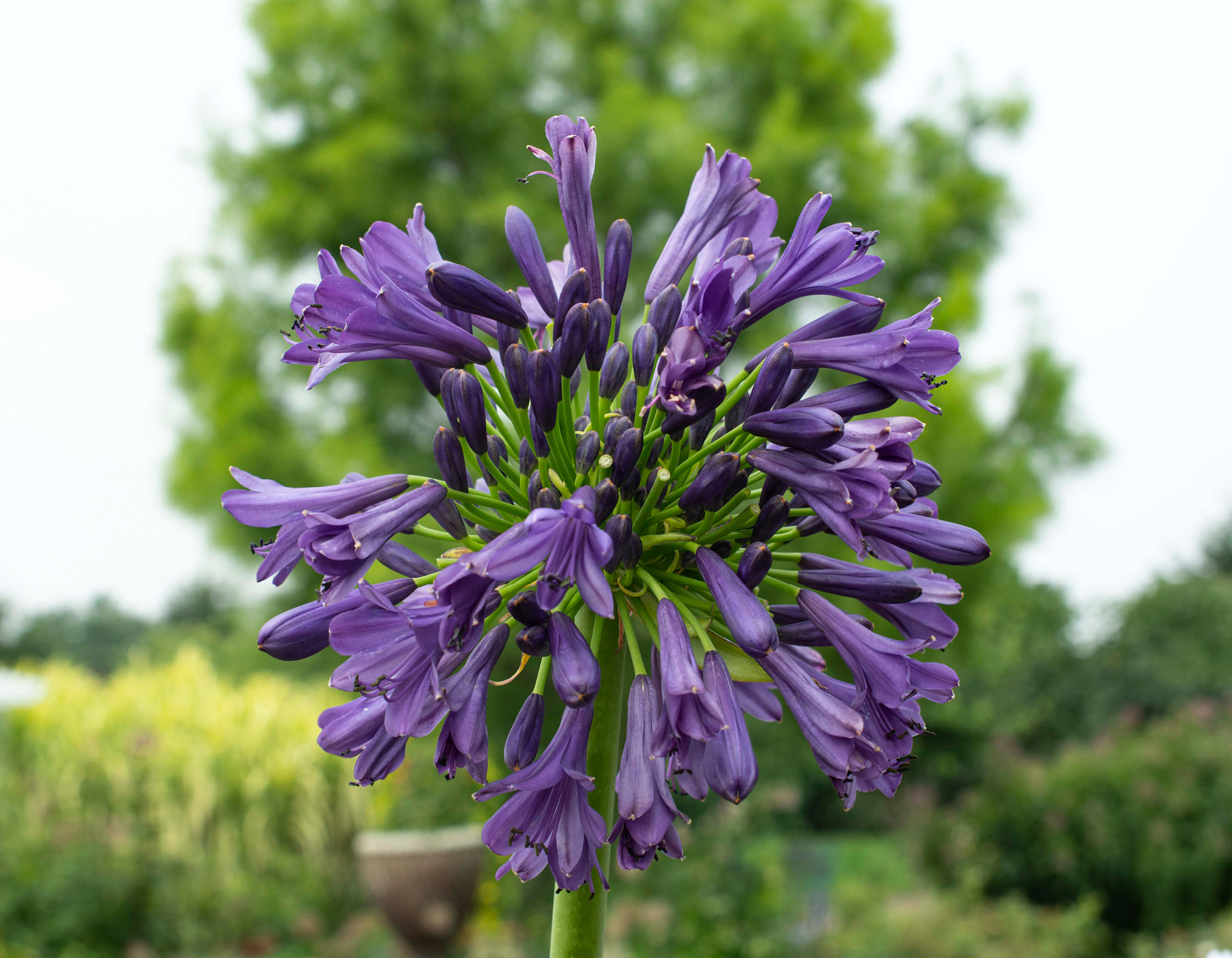Stunning Agapanthus: Enhancing Your Garden's Beauty
Letting Loose the Secret to Successful Agapanthus Growing: Tips and Techniques for a Flourishing Yard
In the world of horticulture, growing agapanthus successfully calls for a tactical method that includes different aspects of plant care. With careful focus to detail, one can unlock the secrets to nurturing these spectacular flowers, causing a yard that prospers with beauty and vibrancy. By understanding the nuances of agapanthus cultivation, one can create an environment where these plants thrive and flower perfectly. In the adhering to conversation, we will certainly check out vital ideas and tricks that will guide you in the direction of a prospering agapanthus yard, using insights into ideal techniques, dirt problems, watering strategies, and more.
Growing Agapanthus: Finest Practices
When planting Agapanthus, correct dirt preparation is essential for making sure effective development and growth of these beautiful flowers. Agapanthus, generally referred to as Lily of the Nile or African lily, thrives in well-draining dirt with a slightly acidic to neutral pH degree - Agapanthus. Before growing, it is important to amend hefty clay soils with natural issue such as garden compost or peat moss to boost drainage and give necessary nutrients for the plants
To plant Agapanthus, select a location that receives complete sunlight to partial color, as this will certainly promote healthy and balanced growth and bountiful blooming. Dig a hole two times the diameter of the plant's root round and place the Agapanthus at the exact same deepness it was previously expanding. Gently backfill the hole with dirt, pushing down securely to get rid of any kind of air pockets around the roots.
Water the recently planted Agapanthus extensively and continue to maintain the dirt uniformly moist, particularly throughout the plant's active growing period. Agapanthus. Using a well balanced plant food once a month can additionally support the plant's growth and flowering. By adhering to these finest practices for growing Agapanthus, you can develop a spectacular display screen of these captivating flowers in your garden
Perfect Dirt Conditions for Agapanthus
For optimum growth and blooming success of Agapanthus plants, guaranteeing the dirt problems are perfect is critical. Agapanthus flourishes in well-draining soil with a slightly acidic to neutral pH degree ranging from 6.0 to 7.0. This kind of dirt permits adequate water drainage, avoiding waterlogging which can cause root rot. To boost soil drainage, think about adding natural issue such as garden compost or peat moss when preparing the planting website. Moreover, Agapanthus chooses soil that is rich in nutrients, so incorporating a balanced fertilizer during the growing season can promote healthy growth and vibrant blooms.

Watering and Feeding Tips
To make sure healthy growth and dynamic flowers, correct watering and feeding methods are crucial for effective Agapanthus cultivation. Agapanthus plants benefit from routine watering, particularly throughout the expanding period. It is advised to water deeply as soon as a week, ensuring the soil is moist but not soaked. Throughout warm climate or in pots, even more constant watering might be essential to stop the dirt from drying out completely.
When it concerns fertilizing Agapanthus, a balanced plant food with equivalent components nitrogen, phosphorus, and potassium can be used in the spring to advertise healthy growth and blooming. Slow-release plant foods are optimal for offering nutrients gradually over an extended duration. Stay clear of over-fertilizing, as this can bring about extreme foliage development at the expenditure of flowers.
Additionally, including natural matter like compost right into the soil can enhance nutrient degrees and enhance soil framework, assisting in the overall health of the Agapanthus plants. By adhering to these watering and fertilizing tips, garden enthusiasts can ensure their Agapanthus plants thrive and produce stunning screens of flowers.
Trimming and Deadheading Techniques
Correct pruning and deadheading strategies play a vital function in maintaining the wellness and appearances of Agapanthus plants, matching the essential techniques of watering and fertilizing for effective farming. Pruning Agapanthus entails eliminating spent flower heads, dead or yellowing leaves, and general shaping of the plant to advertise better development. Deadheading, the process of eliminating discolored flowers, not just enhances the plant's appearance yet likewise urges further flowering.
When deadheading Agapanthus, it is advisable to clip off the blossom stem at the base using sharp, clean shears. This procedure redirects the plant's energy from seed manufacturing back into root and vegetation development, advertising a healthier and more durable plant. Regular deadheading can prolong the growing period of Agapanthus and stop self-seeding, which can result in congestion.
In regards to pruning, Agapanthus normally advantages from a light trim after flowering to tidy up the plant and encourage fresh growth. Cutting down the spent flower stems and removing any type of damaged or dead foliage assists preserve the plant's vigor and overall appearance. Nevertheless, it is necessary to stay clear of reducing right into the crown of the plant, as this can damage its wellness.

Protecting Agapanthus From Vermins and Diseases
Applying reliable bug and illness administration techniques is essential to safeguarding the wellness and vigor of Agapanthus plants in find more info cultivation. Agapanthus are generally durable plants, however they can still come down with numerous bugs and diseases otherwise appropriately taken care of. One common parasite that impacts Agapanthus is the Agapanthus borer, a caterpillar that tunnels right into the plant, triggering damages to the blossoms and leaves. To prevent problems, regular examination of the plants is necessary. If borers are spotted, they can be by hand eliminated, or insecticidal soap can be used as a control action.
In enhancement to pests, Agapanthus are prone to conditions such as origin rot and fungal fallen leave places. By remaining cautious and addressing pest and condition problems immediately, garden enthusiasts can aid their Agapanthus grow and prosper.

Conclusion
To conclude, successful growing of agapanthus requires appropriate growing methods, ideal soil problems, appropriate watering and fertilizing, routine trimming and deadheading, and security from diseases and pests. By adhering to these methods and pointers, gardeners can guarantee a flourishing yard loaded with attractive agapanthus blossoms. Agapanthus. Remember to maintain constant treatment and focus to detail to promote the about his health and wellness and long life of these stunning plants
When planting Agapanthus, appropriate dirt prep work is essential for guaranteeing effective development and development of these stunning blossoms.Water the recently grown Agapanthus extensively and proceed to maintain the dirt equally damp, specifically throughout the plant's energetic expanding period.For optimal growth and blooming success of Agapanthus plants, guaranteeing the soil conditions are excellent is essential. When planting or transplanting Agapanthus, guarantee the soil is well-prepared to offer the essential foundation for the plants to establish themselves effectively. One typical bug that impacts Agapanthus is the Agapanthus borer, a caterpillar that tunnels into the plant, causing pop over to this site damage to the fallen leaves and blossoms.